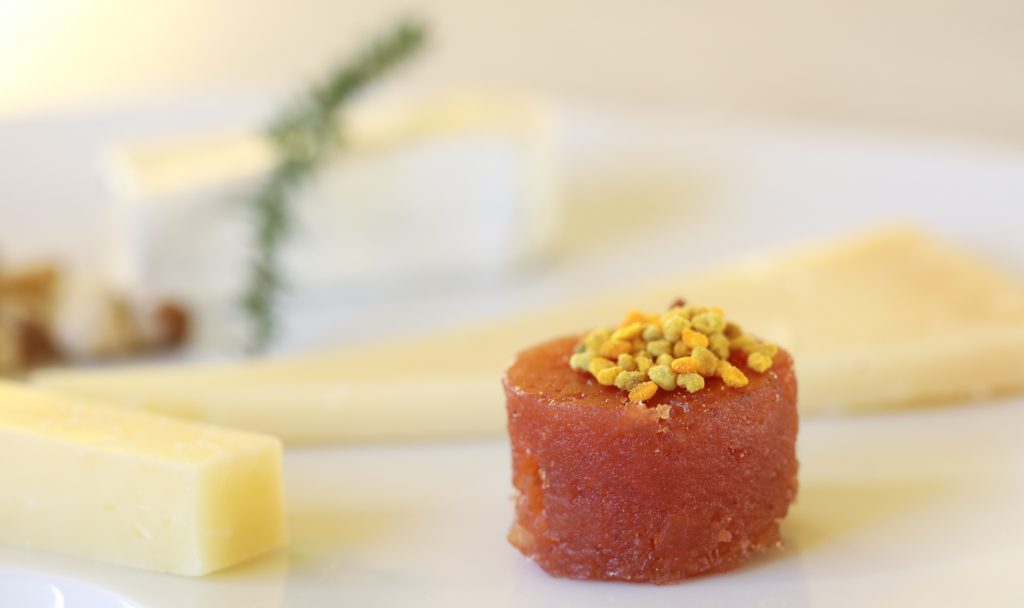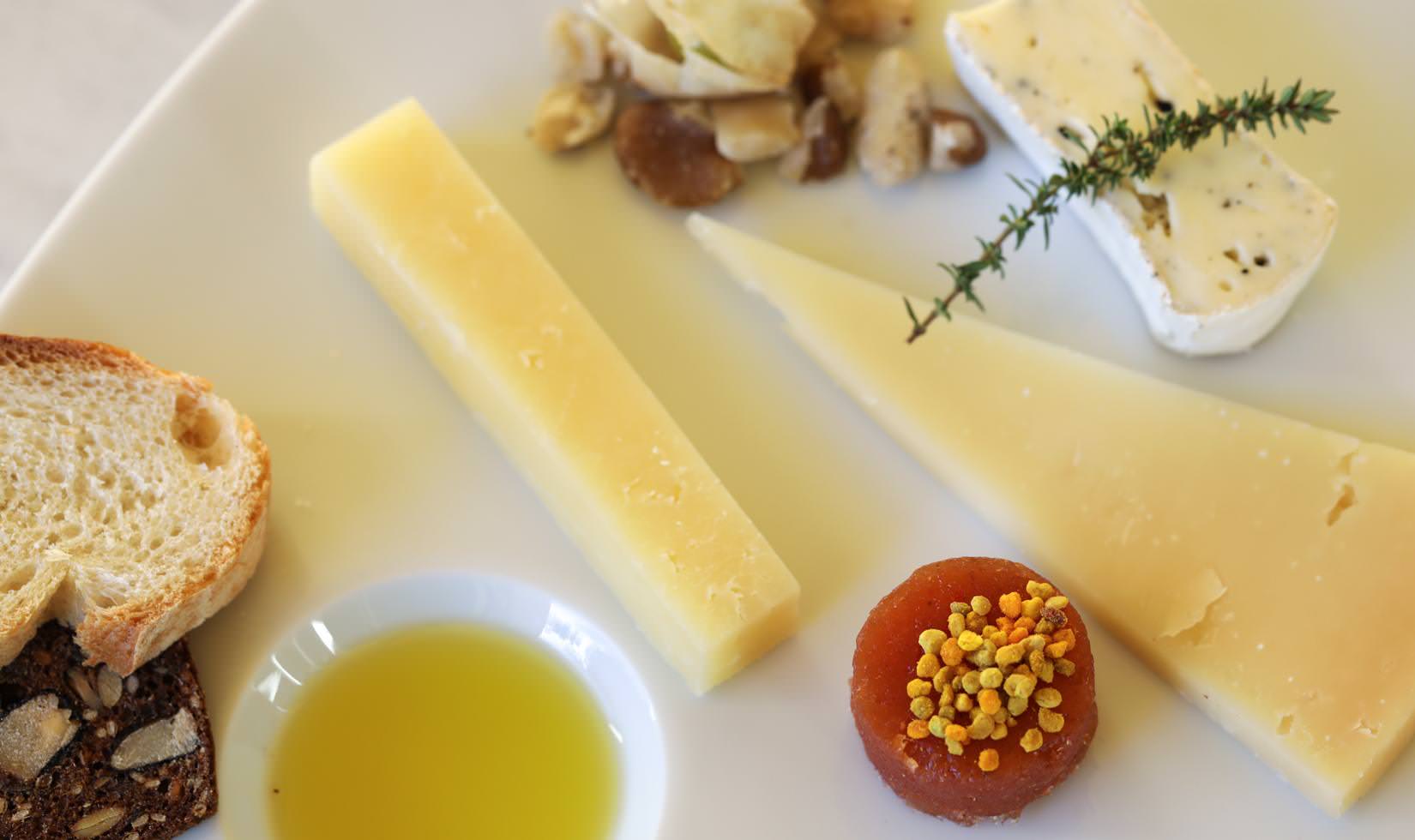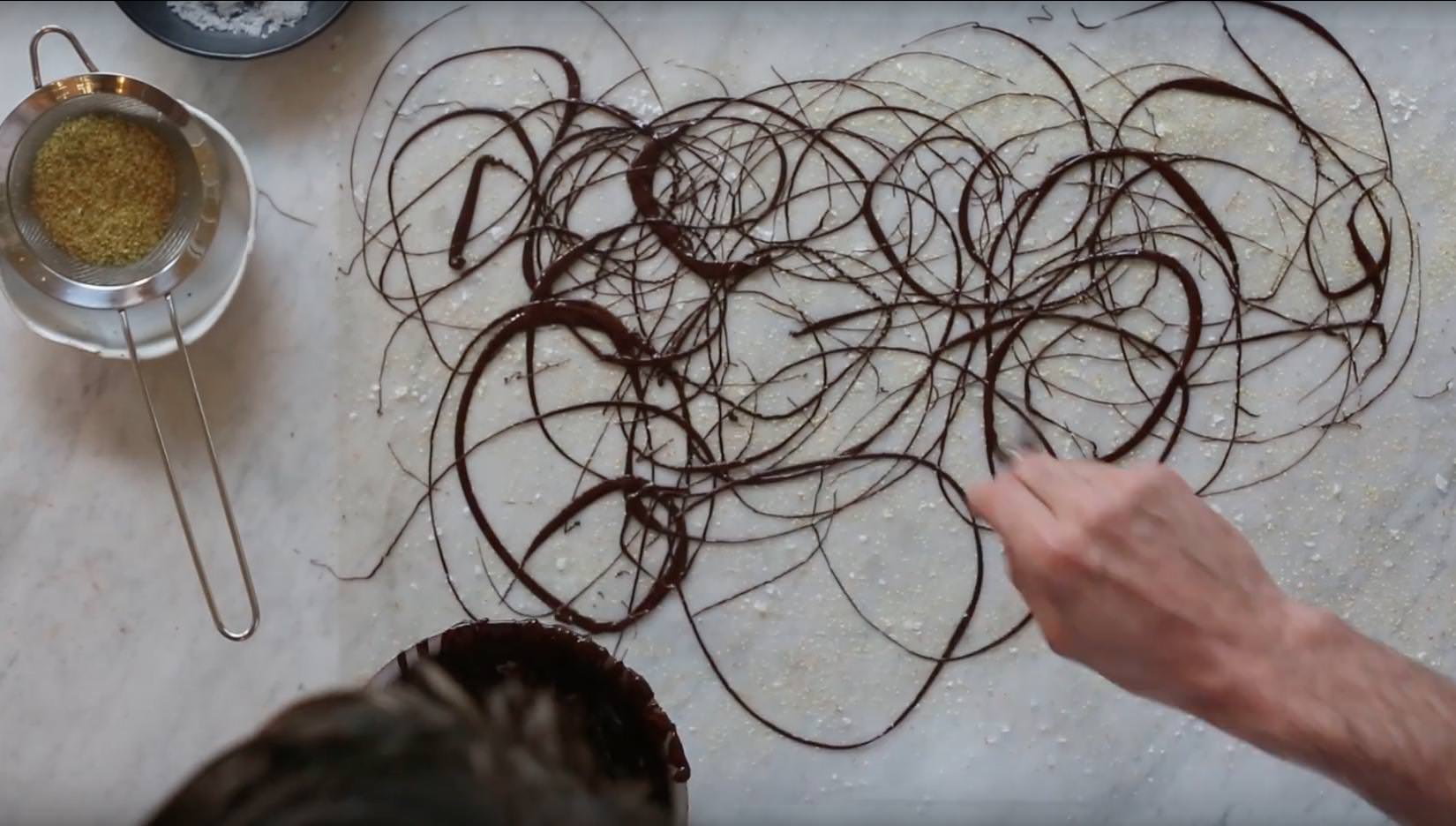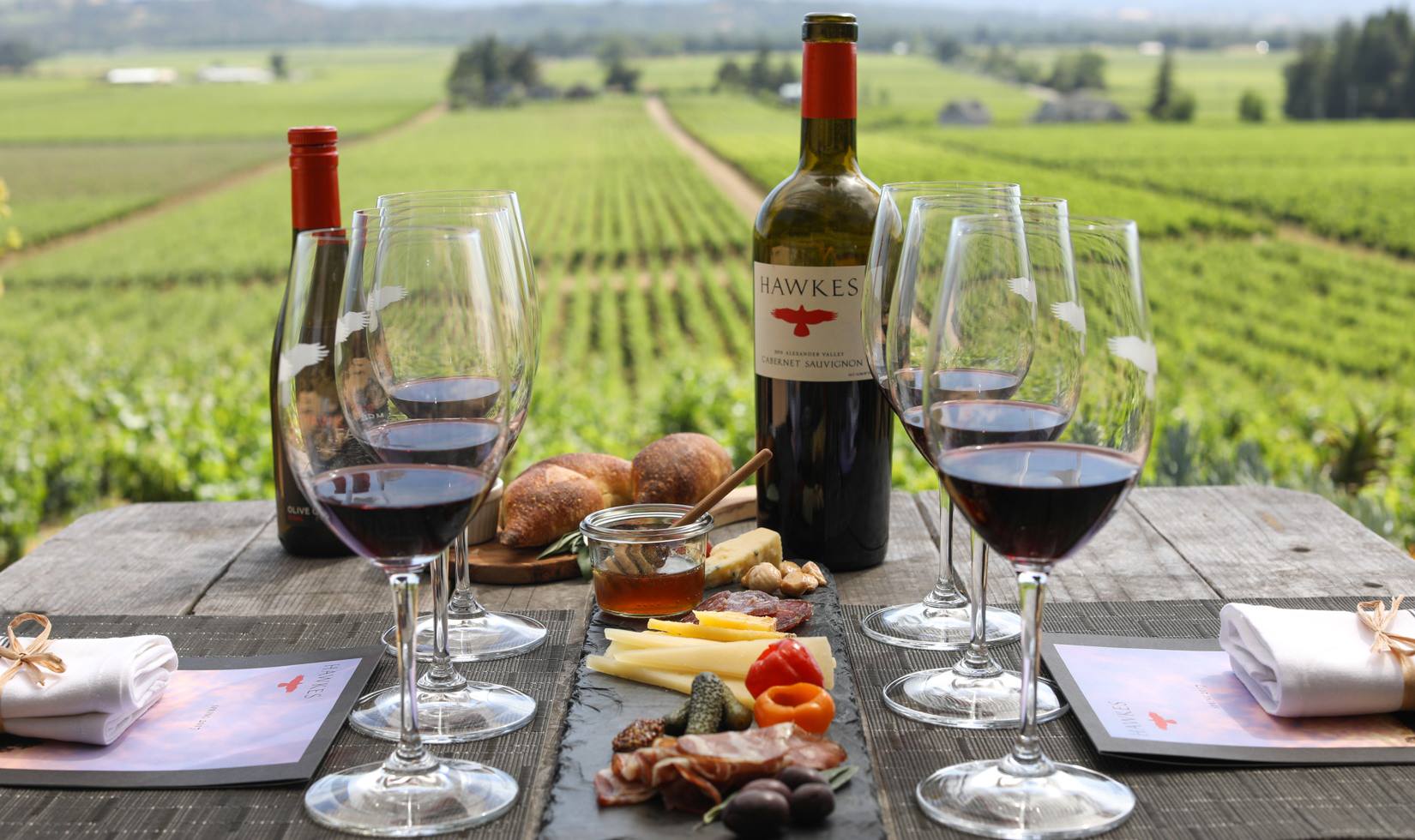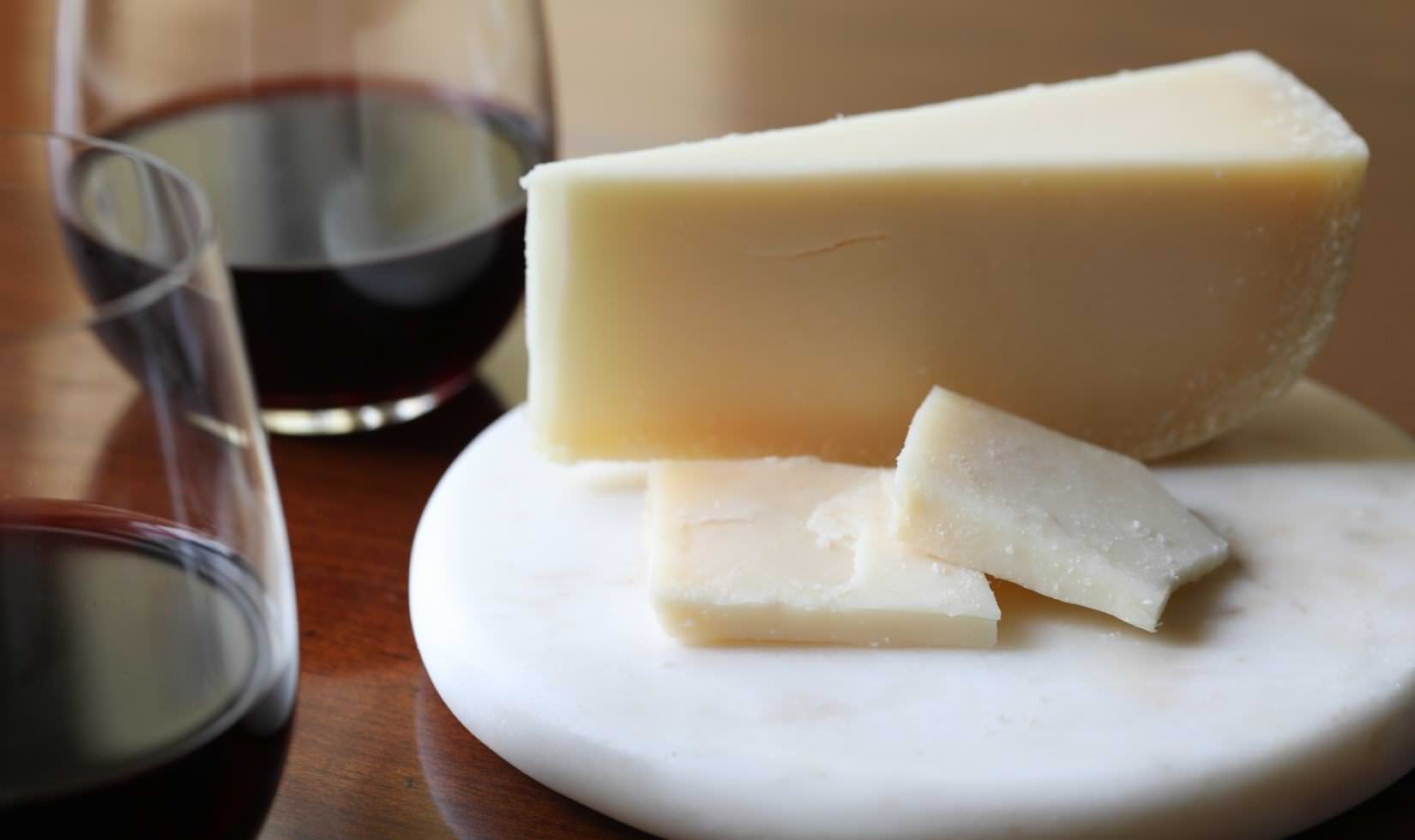When fall arrives, we turn our attention to butternut squash, root vegetables and late-season lettuces, but we cannot forget the luscious quince fruit. Quince paste or jam, also known by its Spanish name, membrillo, is one of the fall garden’s greatest gifts. Like persimmons, these pome fruits are ripe and ready to pick in November. Making membrillo is quite easy. This how-to video shows our favorite quince paste recipe in just a few quick steps. (View the full membrillo recipe on our website).
This round, yellowish fruit looks a bit like a pear, tastes like an apple-pear hybrid but has an almost furry exterior that should be rinsed off before use. At Jordan, we serve quince paste daily on Tours & Tastings as an accompaniment to a cabernet sauvignon wine and cheese pairing. Though sweet, membrillo has a natural tannin component that complements the structure in Jordan Cabernet Sauvignon, while the sweetness in this Spanish delicacy accents the red fruit flavors in the wine. Membrillo is also wonderful as a glaze on roasted chicken or ham, as an accompaniment to a cheese and charcuterie board, as an extra ingredient mixed into baked desserts or as a condiment smeared on a croissant like jelly. Organic Authority has some great advice for other ways to use quince in your cooking.
After watching this video, you might be asking yourself, “Why does quince fruit turn red when cooked?” Within its natural tannins, quince has a lot of anthocyanins, compounds that are universal plant colorants and act as an antioxidant in the human body. The anthocyanins’ color is released when the long tannin chains in the quince are broken down by heat. This breakdown releases not only the beautiful pigment but also desirable floral aromatic compounds. The use of lemon in the water also helps set and stabilize the color.
